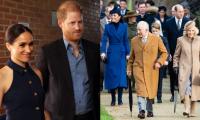“My Name’s Bond...” is the tagline from the world famous James Bond series of films, first released in “Dr. No” and then carried on in subsequent movies featuring the bold and dashing secret agent 007. The Bond series of spy thrillers emanated from Ian Lancaster Fleming (28 May 1908-12 August 1964), who was a British author, journalist and naval intelligence officer. While working for Britain’s Naval Intelligence Division during the Second World War, Fleming was involved in planning Operation Goldeneye and in the planning and oversight of two intelligence units, 30 Assault Unit and T-Force. His wartime service and his career as a journalist provided much of the background, detail and depth of the James Bond novels.
Fleming wrote his first Bond novel, Casino Royale, in 1952. It was a success, with three print runs being commissioned to cope with the demand. Eleven Bond novels and two collections of short stories followed between 1953 and 1966. The novels revolve around James Bond, an officer in the Secret Intelligence Service, commonly known as MI6. Bond is also known by his code number, 007, and was a Commander in the Royal Naval Volunteer Reserve. Twelve Bond novels and two short-story collections were published between 1953 and 1966, the last two (The Man with the Golden Gun and Octopussy and the Living Daylights) posthumously. Because of the international popularity of the James Bond films, Glidrose Productions (now Ian Fleming Publications), who controlled the literary rights to James Bond, hired a series of writers who continue to churn out scripts for more Bond movies. In 2008, The Times ranked Fleming 14th on its list of “The 50 greatest British writers since 1945”.
The actor, who personified the character of James Bond, captured the world’s imagination from the first movie of the series, “Dr. No” in 1962, was Sean Connery. Since then, James Bond has become one of the most recognizable names in the world.
On October 31, Connery died peacefully in his sleep in his mansion in Nassau, Bahamas, the location of one of his Bond films, “Thunderball.” This scribe grew up watching all his movies and continues to look forward to new releases. Sean Connery portrayed the role of James Bond and starred in the first seven Bond films between 1962 and 1983. A number of famous actors have played the role in later movies, namely David Niven, George Lazenby, Roger Moore, Timothy Dalton, Pierce Brosnan and the latest, Daniel Craig but the personal stamp Connery left is indelible.
The Scottish actor hailed from a humble background in Edinburgh, Scotland. His father was a lorry driver who did not have the means to provide him sufficient education so Sean enlisted in the British Royal Navy in 1946, at the age of 16. At the conclusion of his military service in 1949, he found a job as a coffin-polisher and bricklayer. At that stage, he must not have imagined a career in films but he took up weight lifting and bodybuilding in his spare time. Because of his build and macho looks, a local production of “South Pacific” hired Connery because they were looking for muscular guys to play the role of American sailors. Despite the bit role, Connery became convinced that acting was more rewarding than laying bricks and working on coffins and decided to try his luck in the glamorous world of movies. After working in some not so popular films, his luck changed when he starred as James Bond in the first Bond film, “Dr. No.” It was not only a top grosser that year but propelled Sean Connery to fame and made him a household name and the heartthrob of millions of fans. Following the role of Bond in six more Bond movies, which broke records at the cinema, Sean Connery decided to move on to other genres of films.
Besides acting in Bond where he played the fictional Spy Agent 007, his movie career spanned seven decades where he played other roles, which tested his acting ability. He is remembered for his memorable and successful films such as “The Hunt for the Red October,” “Indiana Jones and the Last Crusade,” “The Highlander,” “A Bridge Too Far,” “Finding Forrester” and many others. Sean Connery won numerous acting awards and other accolades—an Oscar for Best Supporting Actor for “The Untouchables” in 1988, three Golden Globe Awards, the British Academy of Film and Television Arts Awards twice for Best Actor, the American Film Institute Life Achievement Award in 2006, the JFK Center for the Performing Arts in 1999 and as a Commander of France’s Order of Arts and Literature. People Magazine voted him as the “Sexiest Man of the Century in 1999”. He quit his film career officially in 2006 but remained highly respected by his peers and admirers, not just for his acting but impeccable role as a gentleman devoid of scandals and affairs. No wonder that Sean Connery, outside of the movies, was voted in the Sunday Herald as “The Greatest Living Scot” in 1994. He was named as “Scotland’s Greatest Living National Treasure by the Euromillions in its 2011 Survey.
Sean was active in politics in his native Scotland. He was a member of the Scottish National Party and an ardent supporter of Scottish independence from the United Kingdom. He financially supported the movement for independence until the UK passed a law that prohibited funding political activities outside of the UK. After moving to the Bahamas where he lived until his death, he vowed not to return to his homeland to live until Scotland gained its independence from the UK. Yet, on 5 July 2000, the one time bricklayer and coffin polisher was formally knighted as Sir Sean Connery by Britain’s Queen Elizabeth II, during a ceremony in his hometown — Edinburgh, Scotland — for his contribution to films and making Britain proud. Earlier he had been denied the knighthood for his political views.Rest in peace Sir Sean Connery, you will live in the hearts of your fans.
Suspects identified as Attaullah and Faisal Shehzad were apprehended from Sialkot
FIA directed Babar to submit responses by April 7, 2025 — a date that had already passed by time he received notice
During hearing, Additional Advocate General Punjab informed court that LHC has submitted its response
During conference, participants assessed evolving maritime situation in region with focus on national security







